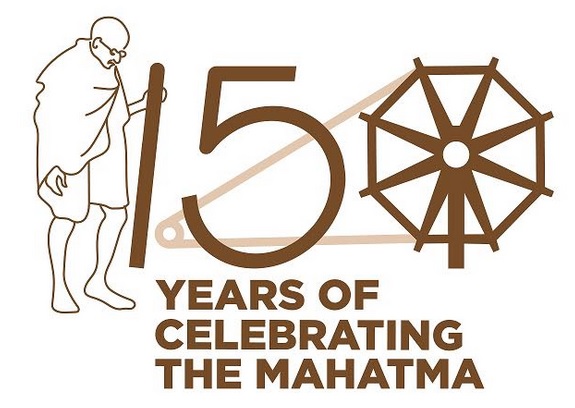About e-GOVERNANCE DIVISION
e-GOVERNANCE DIVISION
1. Coordinating and supporting implementation of National e-governance Plan of Government of India through :
a) Promotion of Excellence in e-Governance through organizing National Conference on e-Governance and National Awards on e-Governance.
b) e-Office Mission Mode Project (Electronic workflow)
c) Capacity Building through Master e-Governance Training Plan
d) Monitoring of 11th report of Second Administrative Reforms Commission
2. Cyber Security and IPv6 Policy of the department in association with departmental NIC
3. DAR&PG Website in association with departmental NIC
Records/Publications held by e-Governance Division:
1. Files and ancillary records generated through the above activities are kept as per extant Records Retention Schedule.
2. Central Secretariat Manual of e-Office Procedure.
3. Publications related to National e-Governance Conference
BACKGROUND:
e-Governance is generally understood as the use of Information and Communication Technology (ICT) at all the level of the Government in order to provide services to the citizens, interaction with business enterprises and communication and exchange of information between different agencies of the Government in a speedy, convenient efficient and transparent manner.
e-Governance facilitates interaction between different stake holders in governance. These interactions may be described as follows:
- G2G (Government to Government)
- G2C (Government to Citizens)
- G2B (Government to Business)
- G2E (Government to Employees)
The broad goals of the e-Governance are:
- Better service delivery to the citizens
- Ushering in transparency and accountability
- Empowering people through information
- Improved efficiency within Government
- Improved interference with business and industry
Role of the Department
e-Governance is one of the subject allocated to the Department of Administrative Reforms & Public Grievances under the Second Schedule to Government of India Allocation of Business Rules 1961. The Department has been entrusted the role to promote e-Governance activities in consonance with the overall national objectivities and priorities. This task mainly involves conceptualization and overall coordination for governance related issues in collaboration with Department of Electronics and Information Technology (DeitY) for technical expertise.
1. INTRODUCTION
1.1 The Parliamentary Standing Committee on Information Technology (2005-2006) in its Twenty Second Report examined the subject matter &ldquoImplementation of e-Governance Projects&rdquo and made inter-alia, the following recommendations:
1.1.1 The Committee recommended that the DIT(now Department of Electronics and Information Technology, DeitY) should speed up the process, complete the formation of Programme Management Structure including all proposed committee/bodies, obtain necessary approvals and make them operational at the earliest so that the implementation of e-governance project could gain momentum.
1.1.2 The Committee recommended that DIT should coordinate with all the line Ministries/Departments, State/UTs to establish an effective integrated delivery mechanism for single window delivery of various public services under different e-Governance projects.
1.1.3 The committee recommended that National e-Governance Plan (NeGP) document should be placed before the Cabinet without any further delay so that various projects under NeGP find a defined track to move ahead towards the destination of implementation at a faster speed.
1.2 Accordingly the Cabinet considered on 23.02 2006 the &ldquoNote for Cabinet on Approach and Key Components of National e-Governance Plan (NeGP)&rdquo submitted by DeitY. The cabinet desired that the Committee of Secretaries (CoS) should make its recommendation on NeGP. The Committee of Secretaries considered this in its meeting held on March 2006. On the basis of recommendations made by CoS a note for Cabinet on &ldquoApproach and Key Components of National e-Governance Plan (NeGP)&rdquo submitted by DeitY was approved by the Cabinet on 18th May 2006.
1.3 The Government&rsquos National Common Minimum Programme accord priority to improving the quality of basic governance and in that context proposes to promote e-Governance on a massive scale in areas of concern to the common man. The National e-Governance Plan (NeGP) has been formulated by the Department of Electronics and Information Technology, (DeitY) and Department of Administrative Reforms & Public Grievances (DAR&PG), keeping this priority in mind and presently consists of Key Components including Common Core & Support Infrastructure and several Mission Mode Projects (MMPs) to be implemented at the Central, State and Local Government levels. The NeGP aims at improving delivery of Government services to citizens and businesses and has been conceptualized with the following vision:
Make all Government services accessible to the common man in his locality, through common service delivery outlets and ensure efficiency, transparency and reliability of such services at affordable costs to realize the basic needs of the common man.
2. IMPLEMENTATION STRATEGY
2.1 Considering the multiplicity of agencies involved in the implementation of NeGP and the need for overall aggregation and integration at the national level, it had been decided to implement NeGP as a Programme, with roles and responsibilities of each agency involved and to create an appropriate Programme management structure. Line Ministries/ Departments are responsible for the implementation of the assigned Mission Mode Projects (MMPs)/ Components.
3. APPROACH/METHODOLOGY FOR IMPLEMENTATION OF NEGP
3.1 As per para 3.5.1 of the Cabinet Note for implementation of NeGP, DeitY would create Common and Support Infrastructure (National/State Data Centres, Common Services Centres & Electronic Service Delivery Gateways) and make suitable arrangements for monitoring and coordinating the implementation of NeGP under the directions of the competent authorities in this regard. It would also evolve/lay down Standards and Policy Guidelines, provide Technical and Handholding Support, undertake Capacity Building, R&D, etc., as required for successful implementation of various e-Governance Projects. DeitY would adequately strengthen itself and its various arms like National Informatics Center (NIC), Standardization Testing and Quality Certification (STQC), Center for Development of Advanced Computing (CDAC), National Institute of Smart Government (NISG) etc., to play these roles effectively.
3.2 DeitY would be the facilitator and catalyst for the implementation of NeGP by various Ministries and State Governments and would also provide technical assistance to them either directly or in collaboration with external professional Consultants. It would serve as a secretariat to the Apex Committee and assist it in managing the Programme. In addition, it would implement pilot/infrastructure/ technical/ special projects and support components.
3.3 DAR&PG responsibility would be towards Generic Process Re-engineering and Change Management, which are desired to be realized across all Government Departments. For various Mission Mode Projects, concerned Line Ministries/Implementing Agencies would be primarily responsible for carrying out the required Process Re-engineering and Change Management. DAR&PG/DeitY would also be promoting initiatives for Human Resource Development and Training and Awareness building.
3.3.1 DARPG has prepared and circulated two reports one on Change Management for eGovernance projects and the second on Business Process Re-engineering for eGovernance projects. These reports have been circulated on 15.11.2010 to all Central Government Ministries and Departments intending to implement eGovernance projects as they provide high level guidance regarding the same.
3.3.2 DAR&PG has formulated a generic document on Business Process Reengineering named GPAF as envisaged in NeGP and 11th report of 2nd ARC. Government Process Architecting Framework (GPAF) provides a detailed systematic guide for conducting Business Process Reengineering in Central Government Organizations. The purpose of the GPAF is to work for rationalization of processes i.e. to ensure that redundant processes that do not add value are eliminated, and processes that are essential to the delivery of the critical services are optimized.
4. NeGP MISSION MODE PROJECTS
4.1 The National e-Governance Plan (NeGP), approved by the Government comprises 27(now 31- the new ones are in italics) Mission Mode Projects (MMPs) and 8 Support Components.
|
Central MMPs |
State MMPs |
Integrated MMPs |
|
1. Agriculture 2. Commercial Taxes 3. e-District 4. Employment Exchange 5. Land Records 6. e-Municipalities 7. Health 8. Education 9. Public Distribution 10. Road Transport 11. Treasuries 12. Crime and Criminal Tracking Networks 13. e-Panchayats |
1. Common Services Centres 2. e-Biz 3. e-Courts 4. e-Procurement 5. eTrade 6. National Service Delivery Gateway 7. India Portal |
5. e-OFFICE MISSION MODE PROJECT
5.1 As per the NeGP, DAR&PG is the Line Department for e-office Mission Mode Project(MMP). NIC was selected as the technology partner in December 2009.
5.2 e-Office aims at creating an office environment that minimizes the use of paper documents and files, and by streamlining office workflow helps reduce process delays. Its main objectives are:
a. To improve efficiency, consistency and effectiveness of government responses
b. To reduce turnaround time and to meet the demands of the citizens charter
c. To provide for effective resource management to improve the quality of administration
d. To establish transparency and accountability
e. To provide cost effective e-storage facility
f. To make office environment friendly and eco-friendly
5.3 e-Office product developed by NIC presently consists of the following:
a. File Management System(eFile) - Automates the processing of files and receipts.
b. Knowledge Management System (KMS) - Acts as a centralized repository of various documents such as acts, policies and guidelines.
c. Leave Management System (eLeave) - Automates the leave application and approval process.
d. Tour Management System (eTour) - Automates employee tour Programmes.
e. Personnel Information System (PIS) - Manages employee records.
f. Collaboration and Messaging Services (CAMS) &ndash For internal collaboration & messaging.
6. Role and Responsibilities of NIC
6.1 NIC is technology partner for e-Office Mission Mode Project. NIC has made the investment both in the development of the various modules of office automation solutions now packaged as e-Office and in the infrastructure for the deployment including the Disaster Recovery and require to further invest to cover all central government ministries/departments.
6.2 NIC responsibility is to develop the technology framework and the e-Office product that includes:
(i) Choice of Technology
(ii) Product Design
(iii) Structure Requirement Specification (SRS)
(iv) Configuration Management & Version Control
(v) Strategic Control of Code
(vi) Security of eOffice
(vii) Quality Control
6.3 In addition, it shall follow the process and guidelines with respect to the Security Policy including Data centre and Backup policy.
6.4 The project was launched in three pilot locations i.e. DAR&PG, DeitY (e-Gov Division) and DoPT (Training Division) during 2010-11.During 2011-12, e-office implementation process was started in 12 Ministries/ Departments namely (i) Ministry of Urban Development (ii) Ministry of Information & Broadcasting (iii) Ministry of Panchayati Raj (iv) Department of Pensions & Pensioner&rsquos Welfare(recently added in lieu of Ministry of Power) (v) Department of Revenue (vi) Department of Financial Service (vii) Department of Land Resources (viii) Ministry of Mines (ix) Disaster Management Division of Ministry of Home Affairs. (Other divisions of Ministry of Home Affairs are part of Phase -2) (x) Department of Chemical & Petrochemicals (xi) Department of Fertilizers (xii) Ministry of Labour & Employment.
6.5 DARPG since August 2016 is regularly monitoring implementation of e-office in all central Ministries/ Departments. As on date 31 Ministries/ Departments are on complete e-office platform.
6.6 e-Office Implementation in phase III is being started in 2014-15.
7. MASTER e-GOVERNANCE TRAINING PLAN (MeTP)
7.1 DAR&PG has prepared the MeTP, which has been implemented in NeGP implementing Ministries/ Departments in 2013-14. MeTP intends to build the capacity of central government employees for implementing e-Governance projects. Major proficiency tracks covered are Business Process Reengineering (BPR), Project Management, Change Management, etc. Training of G1(SO/Asst and equiv), G2(US/DS/Director and equiv) and G3(JS and equiv) levels are being conducted by National Institute of Electronics and Information Technology (NIELIT) and NIC.
8. NATIONAL CONFERENCE ON e-GOVERNANCE
8.1 DAR&PG in collaboration with the DeitY and a State Government has been organizing annually the National Conference on e-Governance since 1997. Secretaries of IT of all the State governments, Central Government officials, Academicians, representatives of Industry, etc. participate in the Conference. The National Conference on e-Governance has been providing a platform of meaningful interaction to policy makers, practitioners, industry leaders and academicians to deliver and recommend an actionable strategy for good governance and to improve the standard of services rendered to the common man. So far twenty Conferences have been held. Last conference was held in Visakhapatnam, Andhra Pradesh during 9-10 January 2017. Details of conference are available on nceg Website
9. NATIONAL AWARDS ON e-GOVERNANCE
9.1 To recognize and promote excellence in implementation of e-Governance initiatives, DAR&PG presents National Awards every year during National Conference on e-Governance. Awards are given in following categories:
- Excellence in Government Process Re-engineering.
- Outstanding Performance in Citizen-centric Service Delivery.
- Innovations in Existing Project of Government Departments Other Than PSUs.
- Best District Level Initiative Through ICT in (i) north east states (ii) hilly states + uts(-delhi) (iii) other states.
- Use of Spatial Technology and GIS in e-Governance.
- Innovative Use of ICT by Central Government PSUs/State Government PSUs.
- Outstanding Initiative in e-Governance by Academic/Research Institutions and NGOs Including Cooperatives/Federations/Societies.
- Innovative Use of ICT in e-Governance Projects by Start-ups, Registered with Government.
- Replication/Adaptation of best e-Governance Projects/Practices Awarded during 01/04/2014 to 01/03/2017
9.2 In order to widely disseminate the award winning initiatives, DAR&PG publishes a book "Cause for Applause" every year, which contains a brief write-up on each exemplary initiatives.

















